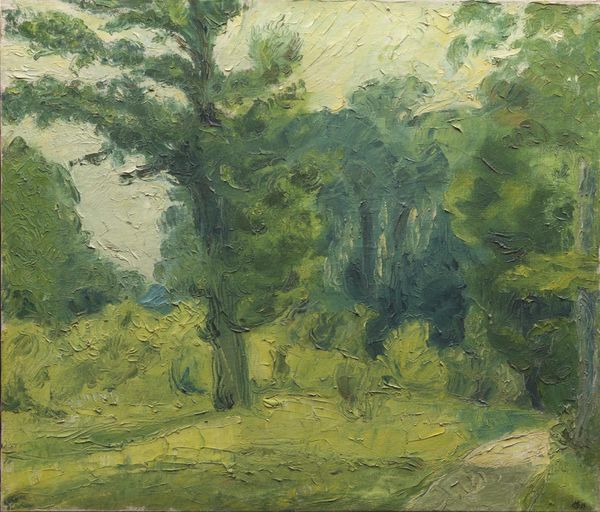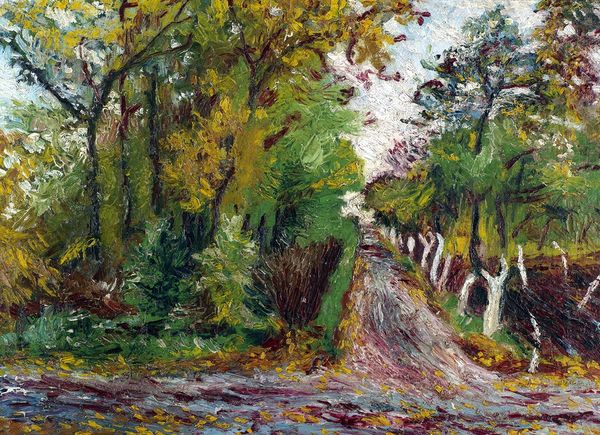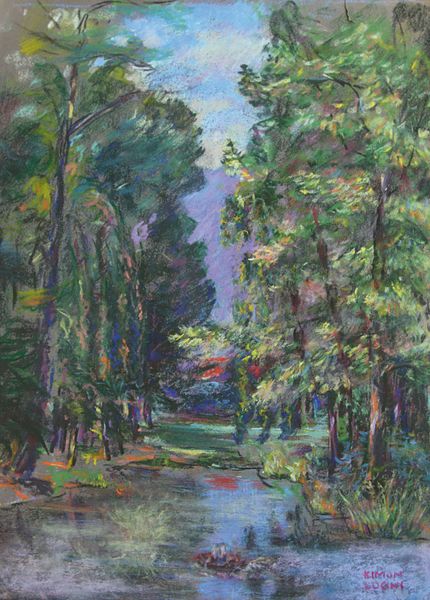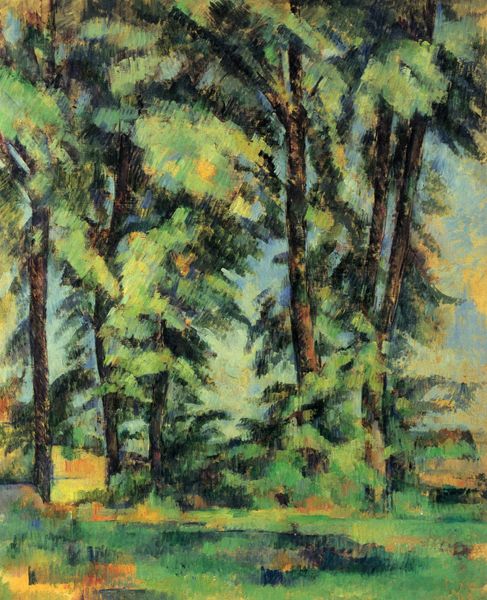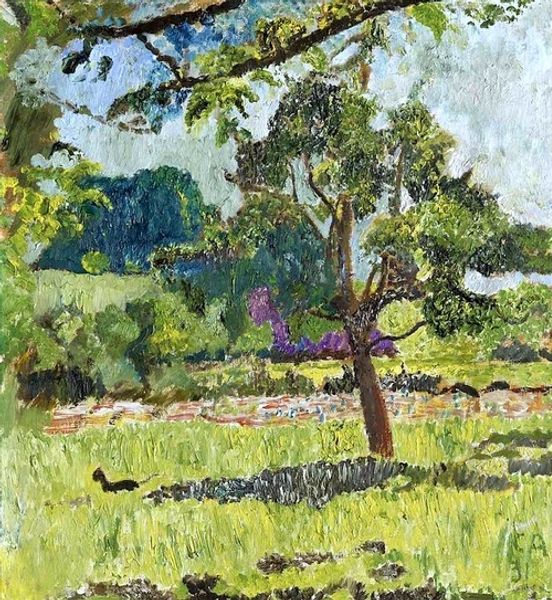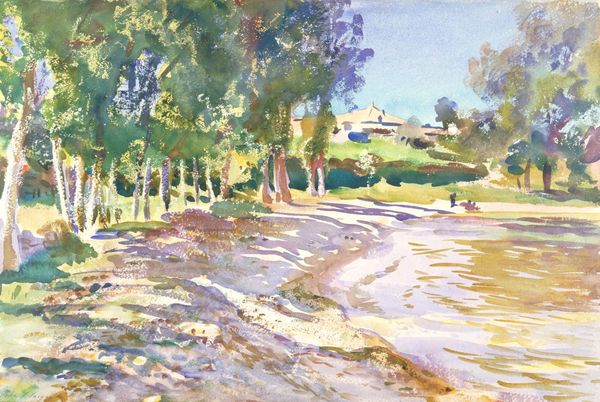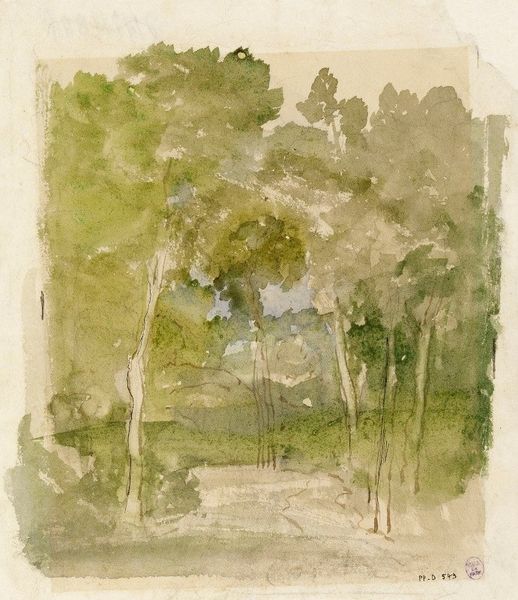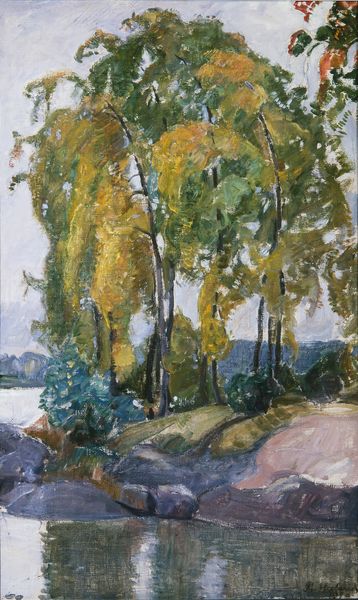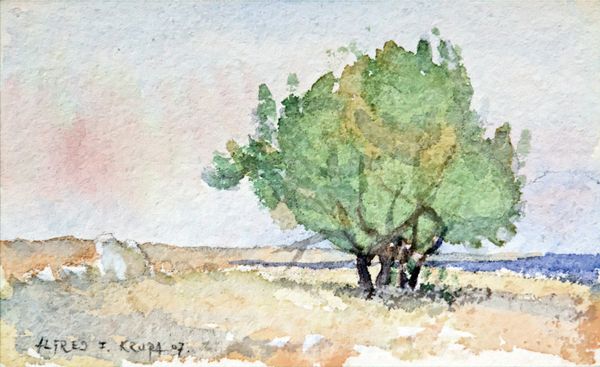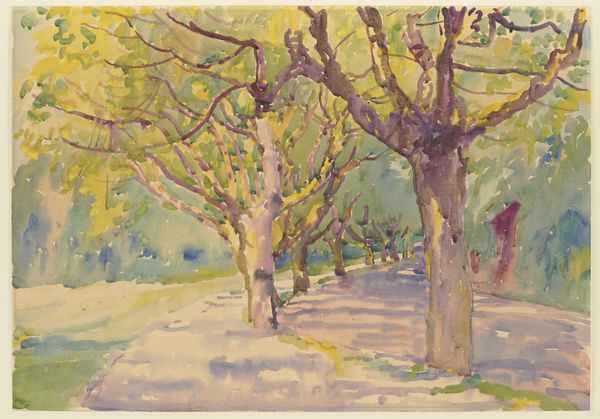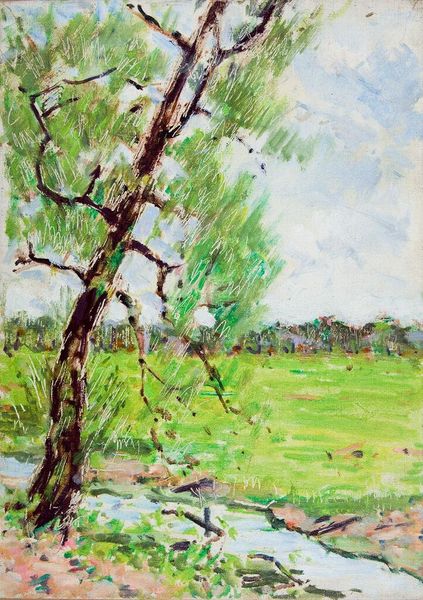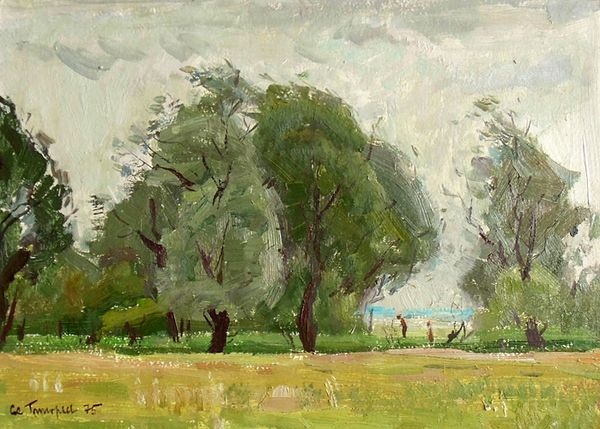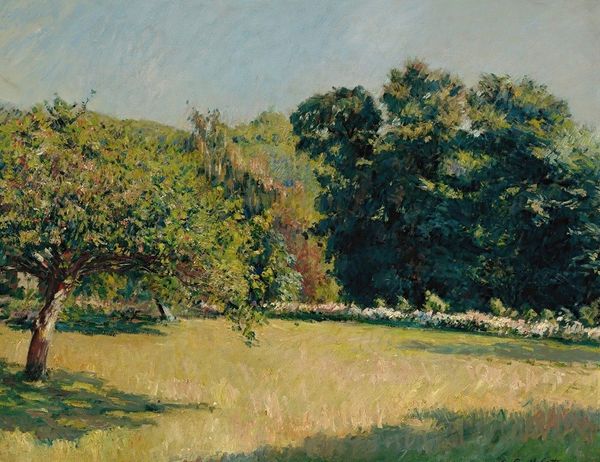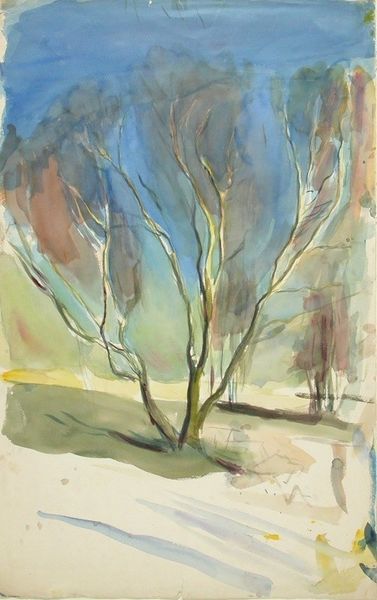
Dimensions: 60 x 81 cm
Copyright: Public domain
Curator: Looking at Caillebotte's "Orchard and avenue of trees," painted in 1894, what immediately strikes you? Editor: It’s awash in light, but that light feels almost… manufactured. The way the brushstrokes create these regimented lines, especially in the field, suggests something other than untamed nature. Curator: Indeed. Caillebotte, working here in oil on canvas and very much *en plein air*, presents an interesting dialogue. He was both an Impressionist, capturing fleeting moments of light, and someone acutely aware of social structures and the formal qualities of painting. How do those qualities, you think, inform the scene here? Editor: The rows of trees, that regimented planting, speaks to me of controlled production—a kind of agricultural factory even. Nature, yes, but nature harnessed for profit, ordered for ease of harvest. And look at the paint itself – it’s not just capturing light; it’s an active, almost aggressive, laying-down of material. Curator: It’s important to remember Caillebotte’s social position, too. He was a man of considerable wealth, who could both pursue painting and patronize his fellow Impressionists. How do you think that background informed his landscapes? Editor: Well, the ordering, the sense of *possessing* nature feels tied to that privilege. It's not the gaze of a peasant laborer; it’s the gaze of an owner. He has access. But it’s also worth noting the radical act of applying paint so freely; he could buy the best, experiment freely – his access wasn't just social. Curator: So you see that tension playing out – the privilege, but also the radical potential inherent in the Impressionist technique itself. He challenges conventional composition here. Editor: Precisely. Even the very choice of painting “nature” here, in this very constructed manner, feels pointed. The social and material are interwoven for me. It shows Caillebotte used those to his benefit. Curator: For me, it speaks to how perceptions of landscape are always filtered through social, political, and aesthetic lenses. It makes one reflect about society and its power on artists. Editor: I agree. The material choices shape how we view not just trees, but entire social relations encoded within a landscape. I definitely perceive the labor, which for me ties this beautiful impressionistic landscape to complex material issues.
Comments
No comments
Be the first to comment and join the conversation on the ultimate creative platform.
